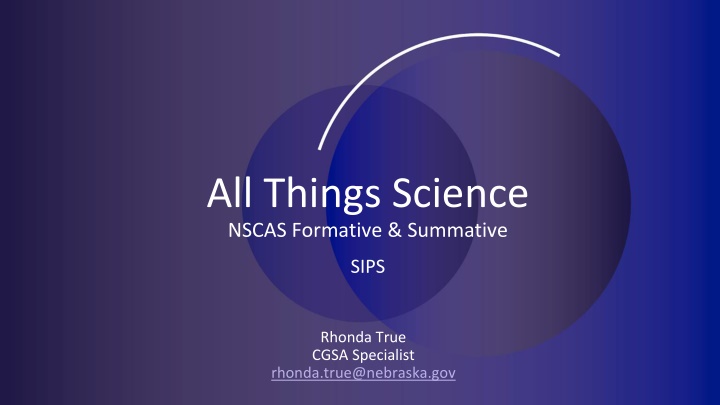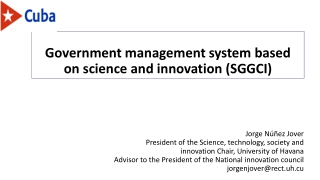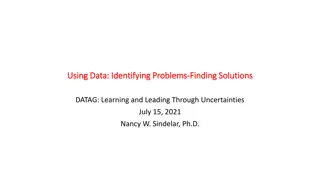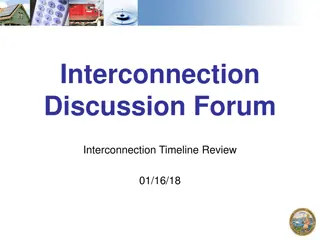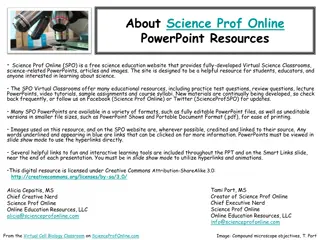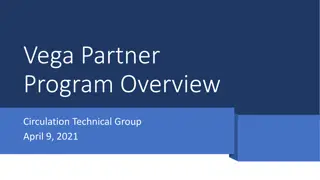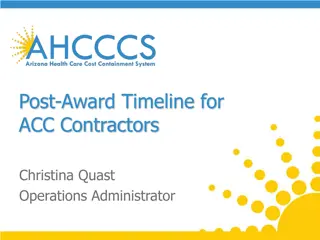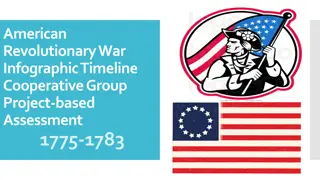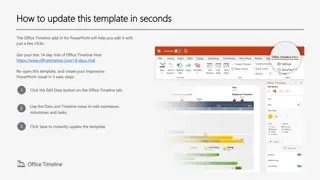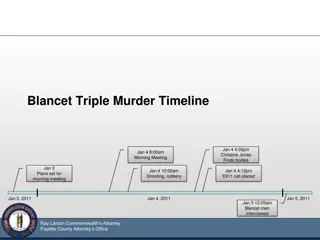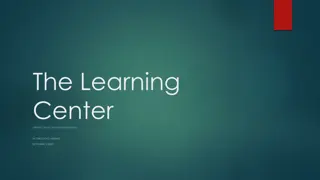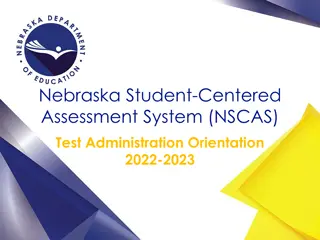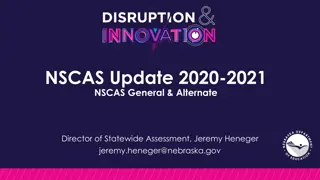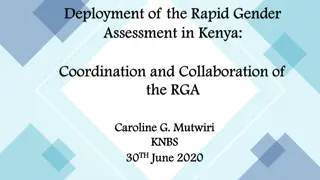NSCAS Science Assessment Development Timeline
Nebraskan Science Assessment system focuses on developing educators' leadership in using assessment data effectively for student readiness. The timeline spans 2017-2022, including adoption, visioning, pilot programs, and standard setting. It aims to equip all students with interdisciplinary science skills for postsecondary opportunities and digital literacy.
Download Presentation

Please find below an Image/Link to download the presentation.
The content on the website is provided AS IS for your information and personal use only. It may not be sold, licensed, or shared on other websites without obtaining consent from the author.If you encounter any issues during the download, it is possible that the publisher has removed the file from their server.
You are allowed to download the files provided on this website for personal or commercial use, subject to the condition that they are used lawfully. All files are the property of their respective owners.
The content on the website is provided AS IS for your information and personal use only. It may not be sold, licensed, or shared on other websites without obtaining consent from the author.
E N D
Presentation Transcript
All Things Science NSCAS Formative & Summative SIPS Rhonda True CGSA Specialist rhonda.true@nebraska.gov
NSCAS Science Assessment Development Timeline 2017 2018 2019 2020 2021 2022 NCCRS-S Adoption Visioning Field Test Continue Formative Repository Operational Test Standard Setting Board approval of cut scores Begin Formative Classroom Repository Development Task Force Pilot Development Pilot
Assessment Theory of Action Theory of Action Educators are qualified/ credentialed, effective leaders that critically use CIA products, processes, and data to support student college and career readiness. ALL students integrate science learning based on the 3 dimensional science standards to ensure application and transfer of knowledge and skills in interdisciplinary ways. The assessment system contributes to shifting the underlying skill set of the state s workforce to draw new business via NE students. Curriculum, instruction, and assessments designed for NE- CCRS are implemented systemically and systematically. Every student upon completion of secondary education is prepared for postsecondary education, career, and civic opportunities and possesses technological and digital readiness. Outcomes Outcomes
Nebraskas Science Assessment Claims Overall Claim Students can demonstrate the scientific literacy necessary to be civic minded decision makers and demonstrate readiness for college, career, and lifelong learning through application of science and engineering practices and crosscutting concepts within and among the disciplines of science. Critical Consumers of Information Students can gather, analyze, and communicate information from multiple sources to use as evidence to make sense of familiar and unfamiliar phenomena and problems. Interconnectedness of Science Students can make connections between disciplinary core ideas within the physical science, life science, and Earth and Space sciences domains, across multiple science domains, and across multiple content areas (such as mathematics and English language arts) to make sense of familiar and unfamiliar phenomena and problems.
NSCAS Science Assessment System Components * *Common Thread: Professional learning for educators* Interim Assessments (district chosen) - District Benchmarks with PAD -Map Growth Statewide Summative (5,8,11**) Classroom Tasks (K-12) NDE Formative Task Repository Currently at 5 and 8 Will have K-12 by Jan 2022 **ACT for 3rd year cohort
Features to Maintain Consistency Demonstrate science under- standing by doing science Grade Phenomena and Problem- focused Engage diverse sense- making Require reasoning with evidence appropriate 3D targets
Nebraskas Assessment Development Process Shifts Moving From Moving Toward Writing assessments in isolation Developing assessments in a coherent system Modifying instruction to fit assessment (teach to the test) Curriculum, Instruction, and Assessment equally inform each other as part of a feedback loop Assigning construct to task Developing task from construct, utilizing design tools to guide and revise Determining what assessments measure based on student performance Determining what counts as actionable evidence with teachers making design choices Focusing state resources solely on state summative Focusing resources on the entire system, beginning with classroom formative
Building from the Classroom Level Quality Summative Assessments Quality Interim Assessments Building in this direction makes Summative Assessment at the service of instructional shifts instead of the other way around. Quality Formative Assessments Quality Instruction Quality Standards
Principled Assessment Design Process Purpose and Use
Formative Classroom Repository Password: ScienceFA
NDE Formative Science Repository Link with password Show how the folders are set up Talk about work being done this summer
Statewide Summative Task Model
Stackable, Instructionally- embedded, Portable Science (SIPS) Assessments
About SIPS Stackable, Instructionally-embedded, Portable Science (SIPS) Assessments Funded by the US Department of Education s Competitive Grants for State Assessments Program, announced in September 2020 Three-year timeline (September 2020 September 2023) Collaborative partnership including eight states, five organizations, and 10 expert panel members Nebraska is the grantee and lead state; Alaska, Alabama, Montana, New Mexico, New York, South Carolina, and Wyoming are partner states
SIPS Project Goals Leverage Existing Frameworks and Resources to: Multiple common science assessment tasks are embedded within replacement instructional units and can also be administered on a stand-alone basis. Create a bank of instructionally- embedded, science assessment tasks aligned with an actionable performance scale Create State and local educators participate in task development using a principled assessment design process that supports practitioners fluency with the standards Build state and local educators capacity to offer high quality science instruction, evaluate students learning, and make data-based instructional decisions Build Tasks and replacement units are designed to be portable, allowing for student learning and assessment to take place under a wide range of instructional settings Engage educators, students, and parents in a partnership for student success across a range of circumstances Engage
SIPS Project Deliverables 1 - Project Foundations SIPS website Project Theory of Action Claims, measurement targets, and performance level descriptors Yearlong curriculum and assessment planning tools (student profiles, learning progressions, curricular alignment tools and templates) Year 1 2 Curriculum and Common Assessment Development Two year-long model courses (~4 units each) at grades 5 and 8 aligned to NGSS thematic or topics bundles Bank of instructionally-embedded common science assessments aligned with an actionable performance scale Virtual classroom assessment design workshops with participating educators from SIPS partner states Year 2 Year 3 3 Pilot Study and Measurement Models Pilot study administration and summary of findings Refinement of curricular units and common assessments Measurement models Dissemination plan
